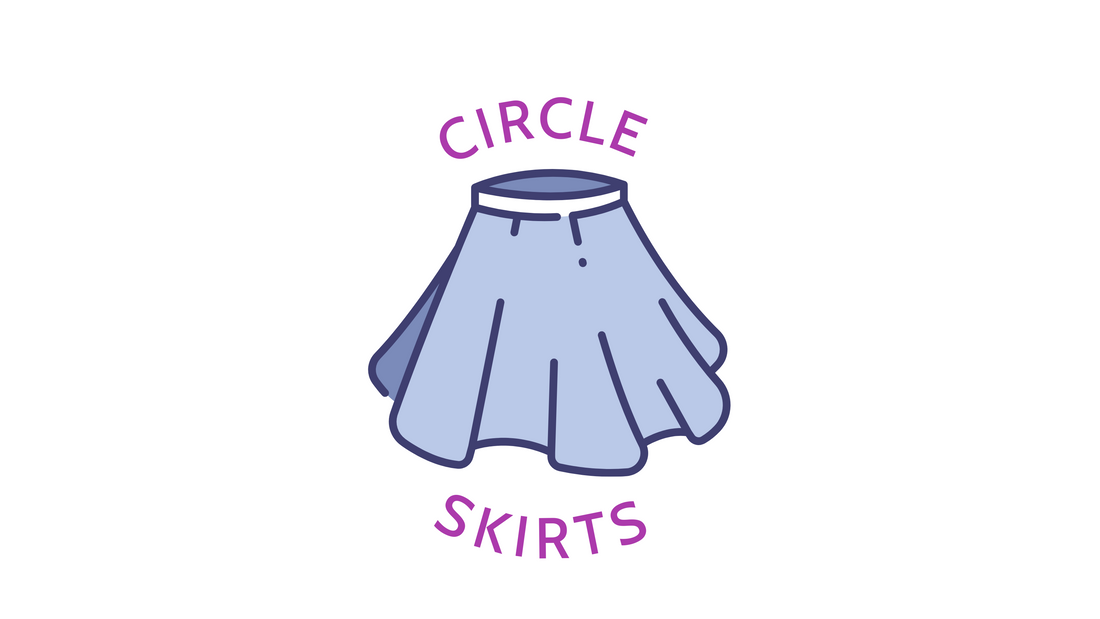When making a Circle Skirt there are a few things you need to know to start. The first thing you will need to determine is if you are doing a fitted skirt at your waist or if you want it to have an elastic waist.
Next you will need to determine how fluttery or loose you would like to have your skirt:
- Double Circle
- Full Circle
- 3/4 Circle
- Half Circle
- 1/4 Circle
Parts of a Circle:
- Circumference - The circumference of a circle is the measure of the distance around the outside edge of a circle
- Diameter - Diameter is the measure of the distance across the center of a circle. The diameter is equal to twice the measure of the radius
- Radius - The radius of a circle is the distance from the center of the circle to the edge of the circle
When measuring your waist you are looking for the Circumference of your circle. Once you have your waist measurement you would add 2” then find the radius of the circle you want to make. If your hips or high hips size is much larger than your waist you will need to either have a closure in the side of the skirt or have a larger opening with an elastic waist.
To use the Circle Skirt calculator below select the type of skirt, then enter the measurement for your waist then the length you would like your skirt to be. If you would like to do a double circle skirt divide what will be your waist measurement in half then when cutting your skirt cut the skirt out of 2 pieces of fabric using the same measurements that you got from dividing the waist circumference in half.
To make your pattern you will use either a large piece of paper or a piece of tracing cloth to draw on, then select a starting point on the edge of your paper or tracing cloth on a strait line using a ruler to plot the radius for both your waist and fabric length.

If your fabric is not at least 2x the width an 2x of the fabric length you will have to run a stitch along the selvage edge of your fabric to make the fabric wider. This will act as one of the fold lines.
Place the template you made to fit into the corner where the layers of fabric meet.

Then verify the plotted points quickly with the fold of your fabric lined up with the corner of your pattern, then you can cut out along your plotted lines for the outermost circle (the fabric length) and then from the inner circle (waist radius measurement)

The next step is to take your pattern paper away and you can now make sure that the skirt is running in a complete circle and without any strings hanging it to the excess fabric that may not, have cut all the way through.

To finish the skirt with Elastic
Measure a casing for the elastic
- waist measurement to cut elastic to length
- double the elastic width (I recommend 1" non-roll) then add 3/4 of an inch to make the casting
- 2.75 x (skirt waist circumference + 1 inch seam)

